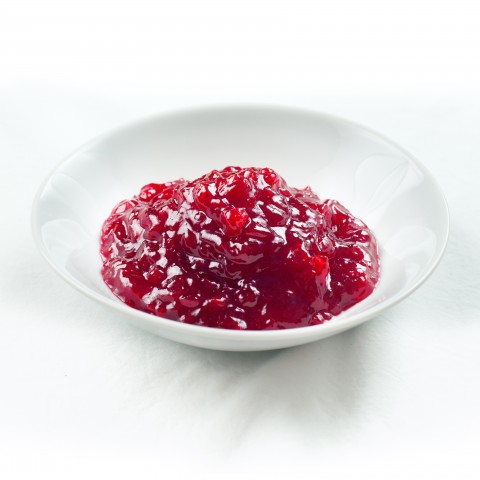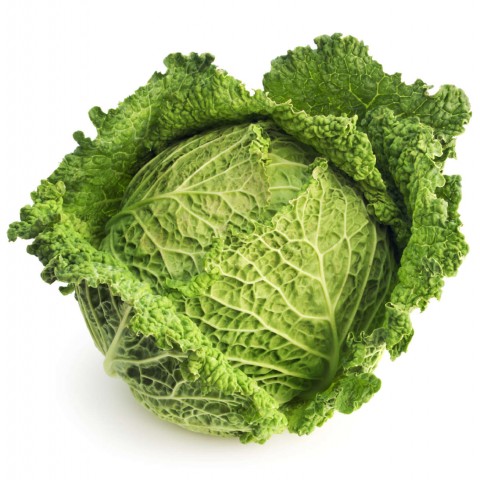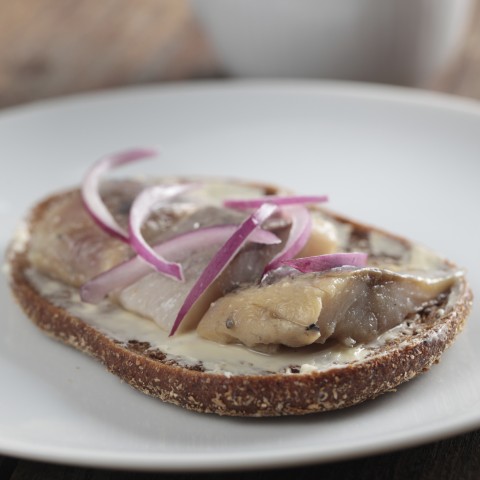
Would you say that you’re the adventurous type? One for tall waves on high seas, long journeys, and tough challenges?
Whether you’re a beginner or an expert in Swedish, you know that the Swedish language can have its rough spots. Why not anchor yourself with something nice and tasty, something closely connected to Swedish culture?
Aside from language, cuisine is one of the most tangible aspects of culture. Go down any main street in any town and you’ll see restaurants serving local and foreign foods right alongside each other. But what about Swedish food?
You may be lucky enough to have Swedish restaurants nearby, or perhaps you have Swedish relatives who can cook nice meals for you.
None of the above? Well in that case, it looks like a trip to Sweden is in order. Start with the stomach, and the head will follow. In this article, you’ll learn about some of the tastiest Swedish food staples for Swedes both inside and outside of Sweden.
 Table of Contents
Table of Contents
- What is Swedish Food Like?
- Authentic Swedish Food vs. Overseas Swedish Food
- Unique Swedish Food
- Food-Related Vocabulary
- The Top Five Must-Try Dishes in Swedish Restaurants
- Conclusion
1. What is Swedish Food Like?

Unless you live in a very international city or a place with a large population of Swedish immigrants, you probably don’t have a particularly clear idea of Swedish cuisine. Aside from “meatballs,” most people would vaguely guess at fish and bread if they had to imagine what Swedes eat.
There’s some truth to that, but that’s far from the only staple food!
Traditional Swedish foods have a rustic flavor because of Sweden’s relatively poor recent history. A lot of people lived off of their own farms, and so they ended up cooking with preserved meat, bread, and vegetables. Cabbage, or kål, is a particularly common ingredient, as you’ll see in this article!
A lot of Swedish food can be described as quite hearty, with rich meats and sauces as well as desserts made with syrupy preserved fruits.
Later on, Sweden began attracting more immigrants. If you walk around a Swedish city today, you’ll see restaurants from places like the Middle East, India, and Asia.
Speaking of restaurants, cafe culture is very important in Sweden and there are lots of pastries and cakes to choose from. The concept of fika, or a coffee break, is one of the most “typically Swedish” things that most Swedes themselves can think of.
Many Swedes treat a fika as a natural break in the work day, as well as a way to meet up with friends or even go on dates. It’s not unheard of for a single fika to last more than an hour and a half on a weekend!
2. Authentic Swedish Food vs. Overseas Swedish Food

Many authentic Swedish cuisine dishes have made their way into other countries, but with regional twists.
Sweden’s most popular cultural export by far is the Swedish meatball, a mixture of ground beef and pork baked in a thick gravy for close to an hour before being served. However, in the U.S. at least, meatballs are more of a finger food served with cheese—no doubt due to Italian influence. In Sweden, they’re a main course served with mashed potatoes or with pasta.
The word gravlax (literally, “buried salmon”) might be somewhat familiar to people who enjoy cured salmon and bread. Indeed, it’s quite similar to smoked salmon on a bagel, a classic dish for New Yorkers. Gravlax, though, is not smoked; instead, it’s dry-cured through a mix of sugar, salt, and white pepper. Then instead of cream cheese, the typical topping is a light mustard sauce.
Why “buried,” then? Traditionally, the curing agents are mixed together in a jar with the salmon and it’s literally buried in the ground.
If you had to think of a berry associated with Sweden, you’d probably come up with the word lingonberry. It’s a small, red berry often made into jams and jellies in Scandinavia. In the United States, though, people tend to pair meat with cranberry sauce, not lingonberries. Lingonberries are a little bit smaller and a shade sweeter than cranberries, making them a bit more suitable for desserts.
And speaking of desserts, remember all the pastries in Swedish cafes? A classic one is smulpaj (“crumb pie”). Most pastries in English-speaking countries have a crust and a topping, but not smulpaj. This dessert has a topping of oats and flour and little else—it’s baked directly with the fruit filling on the baking dish.
3. Unique Swedish Food

It’s tough to find foods other than the meatballs and lingonberry jam mentioned above when you’re outside of Sweden. In this section, we’ll introduce some typical Swedish dishes that rarely make it across the border.
First up is a sort of street snack known as tunnbrödsrulle. From the name, you can see that this has something to do with tunnbröd, or flatbread. Indeed, these are flatbread hot dogs! You take an ordinary sausage as bought from a street cart and lay it in a piece of flatbread before drizzling it with the topping of your choice.
The concept of eating fruit or roses in soup is a bit alien to some cultures. However, wild roses and their fruit grow all over Sweden. Therefore, nyponsoppa is a classic rosehip soup served as an appetizer or as a dessert.
Finally, brunkål (“fried cabbage”) is something that virtually every Swede had growing up at one point. Fast and easy to make, this is cabbage seasoned with meat or vegetable broth and vinegar before being rapidly stir-fried in a pan. It’s often eaten at Christmas to complement a Christmas ham.
4. Food-Related Vocabulary

Now it’s time to put down the dictionary and pick up a fork—let’s learn some Swedish phrases for the café or restaurant!
- Har ni någon lokal specialitet? / “Do you have a local specialty?”
- Har ni vegetarisk mat? / “Do you have vegetarian food?”
Perhaps you’re lucky enough to be invited for a fika, that luxurious time for coffee and pastries.
- En kopp kaffe, tack! / “A cup of coffee, please!”
When you’re satisfied with the meal, it’s good manners to pass on your compliments to the chef.
- Maten var utsökt! / “The food was delicious!”
Of course, that’s far from all the phrases you might need in a Swedish restaurant. Why not check out our vocabulary list of Swedish Words and Phrases for the Restaurant?
5. The Top Five Must-Try Dishes in Swedish Restaurants

To round it off, here are some of the most beloved dishes in the entire Swedish cooking lexicon.
A- Strömming
Herring is the small fish strongly associated with Scandinavia. There are actually two different types: the sill in the North Sea and the strömming caught in the Baltic Sea. Typically, Swedes pickle their herring in a sweet curing agent with plenty of salt and sugar. A couple of other popular Swedish herring recipes include nysekt strömming (fried and eaten in sandwiches) and a variety that’s served in sandwiches with senap (“mustard”).
B- Glögg
Even in the southernmost parts of Sweden, winter can get extremely cold. That’s a perfect time for a steaming cup of glögg, or Swedish mulled wine. Although other European countries have mulled wine traditions, in Sweden the glasses have raisins and almonds placed at the bottom. Additionally, the glasses are kept small as people tend to add vodka or cognac in the mix—giving the drink a bit of a kick!
C- Kåldolmar
One more appearance of cabbage here before the end. The word dolmar in the second half of the word actually comes from Turkish, similar to the English word dolmas. These cabbage rolls are stuffed with beef and pork before being baked in a thick broth in the oven. They’re super-rich and hearty, especially when served with a dash of lingonberry jam.
D- Kanelbulle
While they’re called ‘cinnamon rolls’ in English, the word bulle means “bun” in Swedish. This is probably Sweden’s most popular pastry—on average, each Swede consumes about six of them per week! The secret ingredient separating them from other cinnamon rolls (for those in the know) is cardamom, a spice from India.
E- Prinsesstårta
Legend has it that this delicate multi-layered cake was named in honor of Swedish princesses who adored baking and eating such a flavorful thing. It has three layers of cake separated by jam, custard, and cream, and the whole thing is topped with green marzipan. Lately, a few cakes with pink marzipan have made an appearance too.
6. Conclusion
Did this article whet your appetite? Hopefully not just for eating, but for learning as well. At SwedishPod101.com, you can get a whole lot more than just this sampler platter.
From our flagship podcast series to our YouTube videos and our longform articles, there’s something to suit any palate. The best part is, learning about interesting things like Swedish cooking actually helps you remember vocabulary! You’re going to see the word kanelbulle quite a few more times before your Swedish learning journey is over; you’re pretty much guaranteed to never forget its meaning.
Connecting a new word to something meaningful and emotional is absolutely the best way to learn a language. Sign up for an account at SwedishPod101.com and find out just how tasty the whole journey can be!













